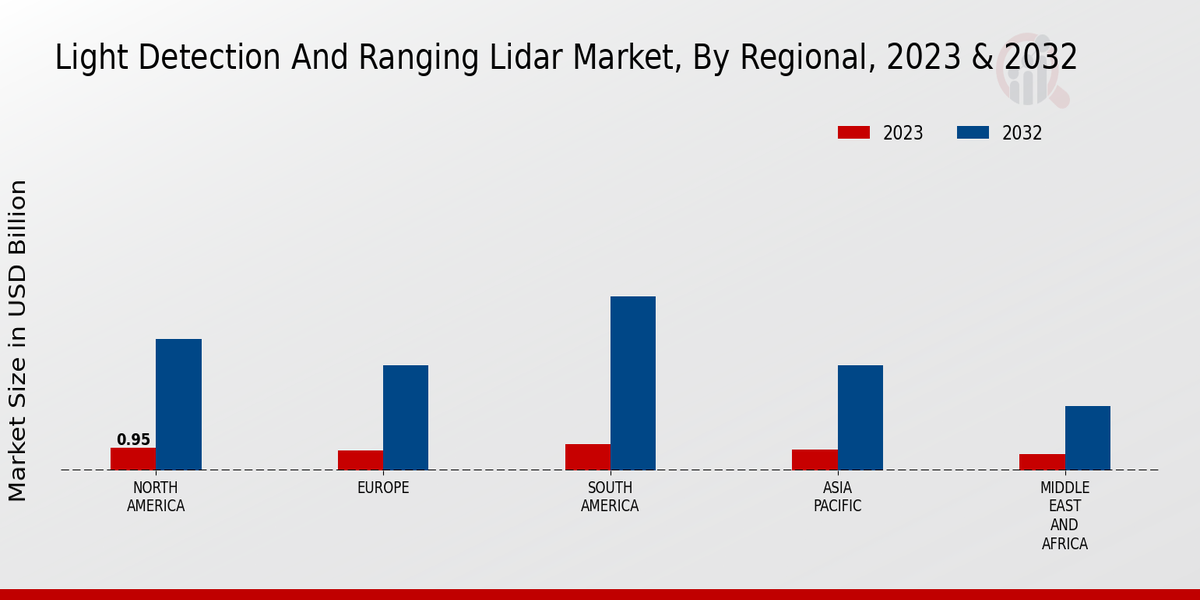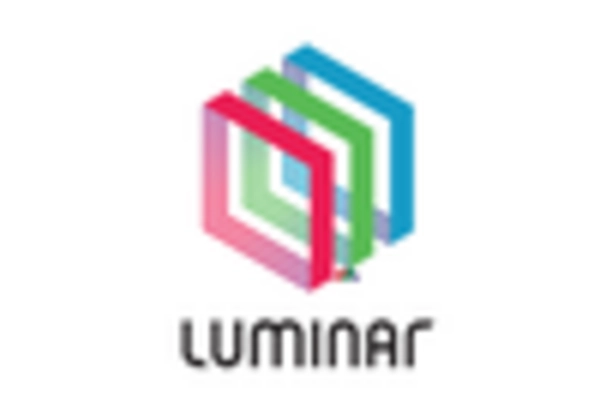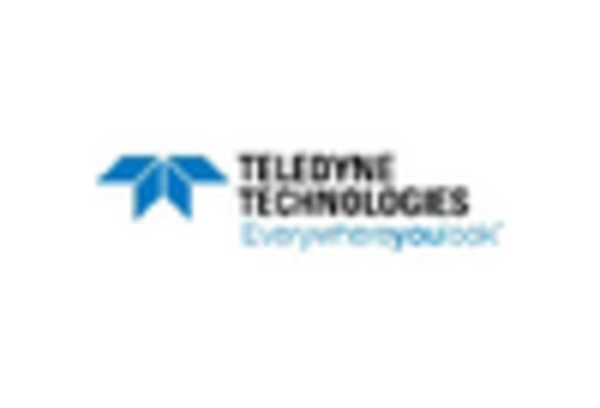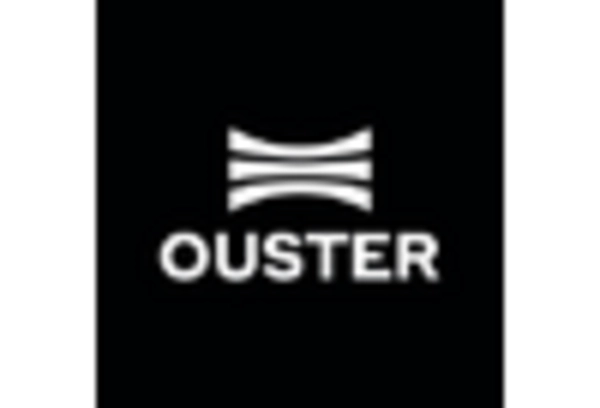Advancements in Drone Technology
Advancements in drone technology are significantly impacting the Light Detection And Ranging (Lidar) Market. The integration of Lidar systems with drones allows for efficient data collection in hard-to-reach areas, enhancing the capabilities of aerial surveys. As drone technology continues to evolve, the demand for Lidar-equipped drones is likely to increase. By 2025, the market for Lidar in drone applications is projected to expand, driven by industries such as agriculture, forestry, and construction. This synergy between Lidar and drone technology indicates a promising future for both sectors, potentially leading to innovative applications and improved data accuracy.
Expansion in Autonomous Vehicles
The Light Detection And Ranging (Lidar) Market is poised for growth due to the expansion of autonomous vehicles. Lidar technology plays a crucial role in enabling these vehicles to perceive their surroundings accurately. As automotive manufacturers invest heavily in Lidar systems to enhance safety and navigation capabilities, the market is likely to witness a surge in demand. By 2025, the integration of Lidar in autonomous vehicles is projected to account for a significant share of the overall Lidar market. This trend indicates a broader acceptance of Lidar technology in the automotive sector, which could lead to innovations in vehicle design and functionality.
Government Initiatives and Funding
Government initiatives and funding are driving the Light Detection And Ranging (Lidar) Market forward. Various governments are recognizing the potential of Lidar technology for applications such as disaster management, environmental monitoring, and infrastructure development. Increased funding for research and development in Lidar technology is likely to enhance its capabilities and reduce costs. In 2025, several government-backed projects are expected to utilize Lidar for mapping and monitoring purposes, thereby expanding its application scope. This support from governmental bodies not only boosts market growth but also encourages private sector investment in Lidar technologies.
Increased Adoption in Surveying and Mapping
The Light Detection And Ranging (Lidar) Market is experiencing heightened adoption in surveying and mapping applications. This technology provides precise topographical data, which is essential for urban planning, environmental monitoring, and infrastructure development. The market for Lidar in surveying is projected to grow significantly, driven by the need for accurate and efficient data collection methods. As municipalities and private firms increasingly recognize the value of Lidar for creating detailed 3D models, the demand for Lidar systems is expected to rise. In 2025, the market for Lidar in surveying is anticipated to reach substantial figures, reflecting a shift towards more technologically advanced solutions in the field.
Growing Interest in Environmental Monitoring
The Light Detection And Ranging (Lidar) Market is witnessing a growing interest in environmental monitoring applications. Lidar technology is increasingly utilized for assessing forest biomass, monitoring land use changes, and studying climate change impacts. As environmental concerns become more pressing, the demand for accurate data collection methods is likely to rise. By 2025, the market for Lidar in environmental monitoring is expected to grow significantly, driven by the need for precise and reliable data. This trend suggests that Lidar will play a pivotal role in supporting sustainability efforts and informing policy decisions.

















Leave a Comment